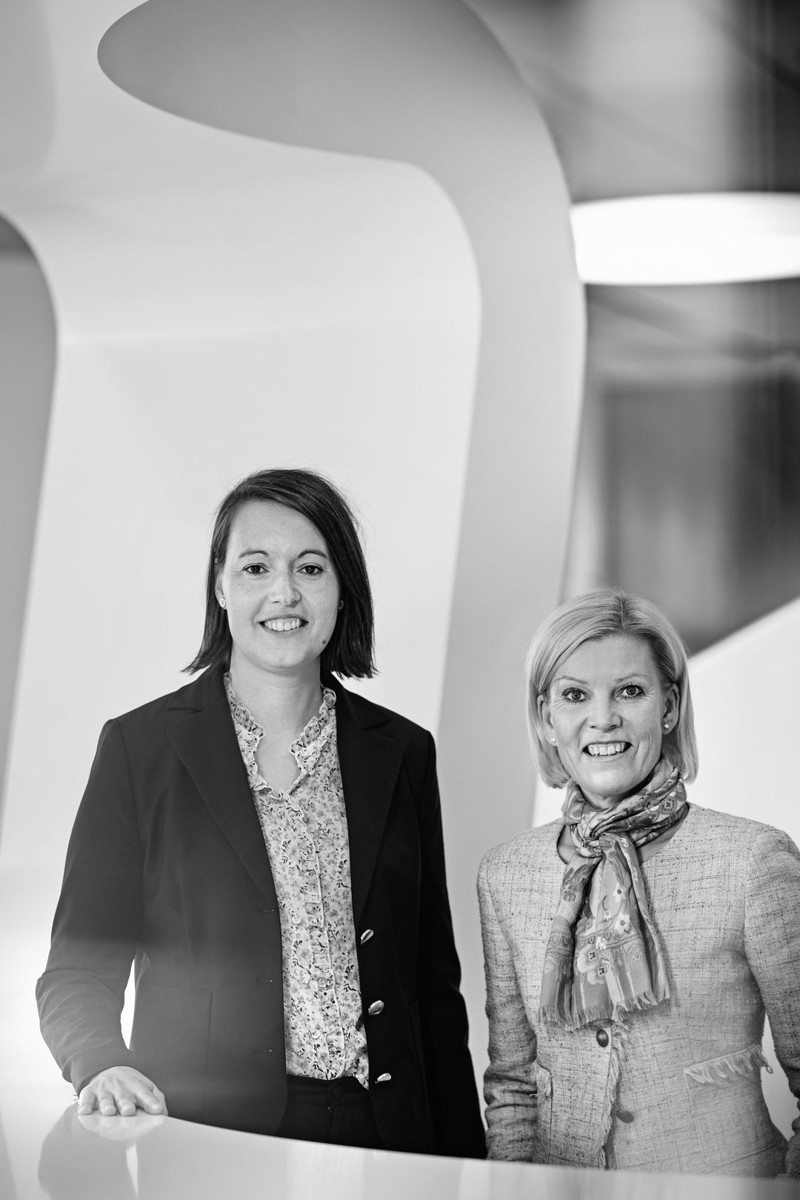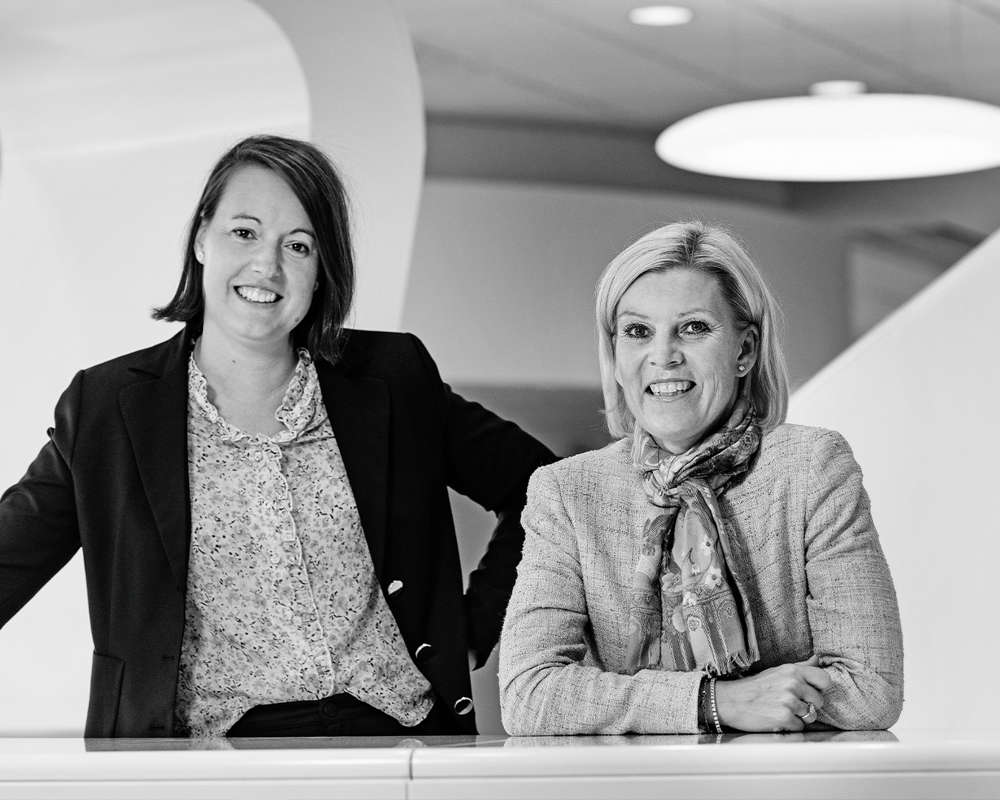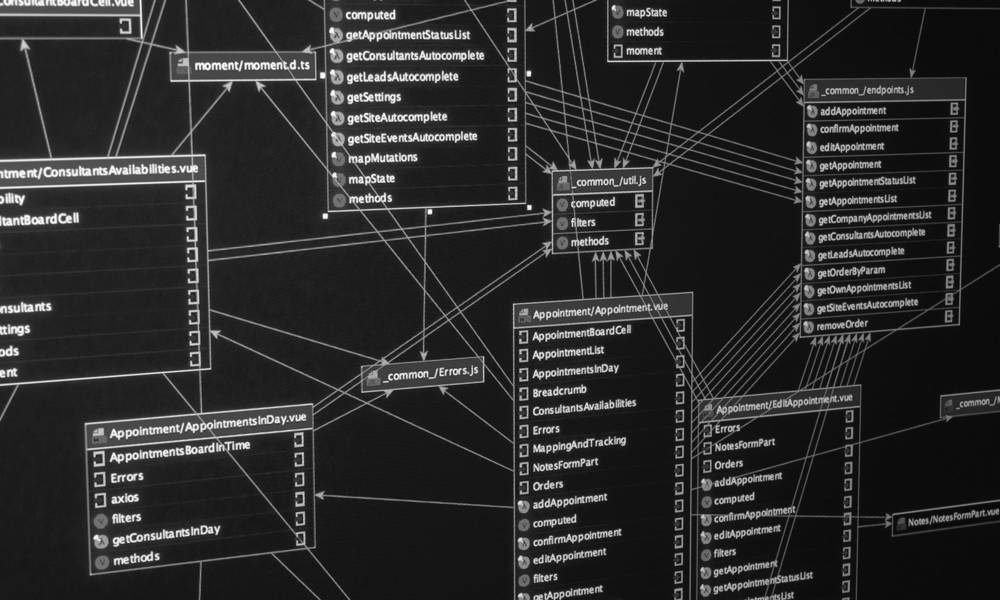Thorough preparatory work, strong anchoring in the organisation and massive support from the CFO are three of the things that have been decisive to ISS’ new controlling framework being in a league of its own. In this article, Pernille Benborg, Head of Group Compliance, and Karina Mitzi Svenningsen, Head of Financial Controlling, talk about their controlling framework, which has taken effort, coffee and many hours, but which has been worth all the work.
It is Monday – a sunny September morning, where the light pours in through the glass façade in the almost futuristic reception in ISS’ headquarters just outside Copenhagen. The reception desk continuous like a sculpture into the room with curved white shapes that wind across the room and guide you towards the coffee machine where the conversation goes lively about the weekend’s events.
Karina Svenningsen, who is Head of Financial Controlling, comes walking expectantly and smiling. She guides me to the meeting room where Pernille Benborg, who is Head of Group Compliance, walks through the door a few seconds later.
Together, the two women have been the spearheads of the project which has been to rethink, develop and set the framework for the way in which to approach and ensure the right controlling at group level in relation to a centralised organisation, a new strategy and challenging market conditions.

Pernille Benborg (right), Head of Group Compliance, has been a part of ISS for more than 20 years, and she has therefore been involved from the very beginning of the project which has been to create ISS’ new controlling concept. Karina Mitzi Svenningsen (left) joined as Head of Group Financial Controlling in August 2020 where she came to play a central role in the execution.
ISS is not what ISS was ten years ago – so the approach to controlling cannot be either
ISS has experienced strong growth the last ten years. In that connection, the organisation has been strongly centralised, and the finance function has developed to meet the new needs in the organisation.
“We have gone from being a decentralised company with very autonomous country organisations to being a more centralised company. In the decentralised setup, it was more natural to be focused on the individual countries in the controlling, while now, in the more centralised setup, it makes sense to focus on the entire group based on balance sheet items,” explains Pernille Benborg and adds:
“But it is still a relatively ’lean’ finance team. Therefore, it has also been important to clarify what we had to ‘control’ so that we were able to focus our efforts right rather than try to handle everything without handling any of it very well.”
She explains that they lacked the overall overview of the reporting, and that they agreed that they did not get a satisfactory output of the controlling. Because they could not see why the numbers developed the way they did. Therefore, it has also been a focus to move away from thinking in countries and towards thinking in ’balance sheet items’ in order to better share knowledge and thus solve common challenges.
“A lot was done, and the controlling team knew about many details in the individual countries. But we lacked an overview of how and why the entire group developed as it did,” says Pernille and adds that the department was also organised differently at the time where it is now divided into financial controlling and business controlling.
“To begin with, we thought that we had to solve the upgrading task ourselves. But, as probably often happens, we did not really get the project going because everyday life was already full of tasks and busy calendars. We could see that it was a relatively large project to rethink our entire controlling concept, and how we should work with it. Therefore, we contacted Basico who helped us move on by facilitating the process and bringing new perspectives.”
Step #1: Define the purpose
Pernille says that they started by looking at the overall purpose of controlling as it should be the guiding principle for how the future controlling concept should turn out:
“Of course, we had to ensure that our figures were correct and complied with IFRS and other applicable legislation in Denmark … but, if we all agreed on that objective, we also had to ensure that our way of working supported that objective best possible,” says Pernille.
She explained that they focused on getting control of the processes, interfaces and system support and on ensuring that the right skills were in place in the organisation. At the same time, they knew that there were many users of the information from controlling so it was also important to have the gathered knowledge reported and communicated in a smart way centrally.
The starting point was Excel on top of OneStream as a consolidation system which each month sent out a multitude of questions in Excel sheets after which the answers were typed in at the same place and then stored in local folders in the controlling team. It did not provide an overview of important trends and overall developments – and it made it difficult to share knowledge with other teams outside finance.
It was clear that there was a need to define what it was important to control, how it was done, and how the information was efficiently gathered from countries and the group, respectively. It was a necessity to be able to share it outside finance with for example key account managers.
“It must be the essential things that are controlled – and that is not necessarily the same every month. Now, Controlling has been given responsibility for and mandate to choose what is important to follow up on. And that is crucial because we are still a small, lean controlling team,” says Pernille and adds:
“We had not decided whether to control actuals or deviations against budget or estimate so it was a large and unmanageable collection of deviations that we were following up on – and sometimes we missed the essentials.”
The suggestion to gather all the information in OneStream came from one of the experienced controllers and ended up with a unique way to use OneStream – both quantitatively and qualitatively.
ISS’ way of using OneStream – in brief:
The moment the accounting figures are reported at the end of the month, a series of questions are auto-generated about deviations on significant items based on predefined substantiality levels.
These questions must be answered before it is possible to make the final upload of the accounting figures – in this way, ISS achieves sufficient controlling of the figures before they are handed over to the group (and they save the return flow). In addition, they collect comments and explanations on developments and deviations and receive the figures at the same time.
Finally, OneStream allows the consolidation of comments and explanations. In practice, this means that you can subsequently draw reports at group level, which for example show developments in actuals year to date.
That way, the explanations are saved for later reference. And, at the same time, this setup also makes it possible for other teams outside controlling to draw data to understand developments across customers, markets etc.
An unusually strong controlling setup
The solution was, among other things, to split up controlling: One team had to focus on ‘actuals’ (Financial Controlling), and another team had to focus on the business finance part (Business Controlling). And with that starting point, they could begin to design the processes according to the distribution of roles and skills in the two teams.
“We started with the conceptual part, but quickly began to look at how we could build it in OneStream. And the building of files part is where I let things go,” says Pernille.
Karina Svenningsen smiles, takes the floor and enthusiastically tells that she has never before seen such a powerful controlling setup as the one they have now developed in ISS.
“It is really unique,” she says with bright eyes, explaining that she came to ISS at a time where the project was quite far along so her role has been to execute and help tie a knot on some of the things that the others have developed.
“Christian Ettrup, who is our internal project manager, helped to set up the technical solutions in close cooperation with Per Hove Nielsen’s (VP, Head of Financial Systems and Processes, ed.) team. And, in terms of the solutions, it has been quite decisive that the countries actually comment qualitatively on their own figures – at the same time as quantitative reporting is sent to the group,” she says and continues:
“In the places, I have been before, you have waited for the figures to come in – and only then you had to start finding errors and make analyses and ask people. Here, we simply get the comments in to start with together with the numbers, and this means that controlling starts immediately. Then you look at what kind of comments the countries have reported into the system.”
She explains that the transition from country focus to area focus has resulted in a kind of ‘balancing journey’ – for, for example, fixed assets, other receivables, trade receivables etc. – and that this has meant that the controllers have become ’subject matter experts’ for the specific areas they are each responsible for:
“If you find an error in the UK, you might ask Germany if they have also experienced the same problem. And, in this way, you build up knowledge in the areas – and this means that things are better controlled. So we are experts instead of generalists,” she explains, adding that they work on a rotation principle so that the controllers gain knowledge of different areas.
“It is a pretty strong foundation for getting things controlled", she proudly points out.
The art of making the numbers speak
Karina explains that, at the same time, they have built reporting based on some of the notes they make in connection with the external annual report.
“Our reports are not one-to-one copies of the notes from the annual report, but they have the same starting point – the reader of the accounts is, after all, interested in certain things in the different areas. We have therefore discussed quite a bit what the organisation’s and management’s needs were and how to present it in a good way. How we could make the numbers speak,” says Karina and nods at Pernille.
“In addition, we have made an adjusted management report which is a kind of reporting on the areas that are in focus. Take for example our ’other receivables’: We divide the area into categories, which our notes are also divided into, and then we look at developments in the area of ’actuals’, and then we describe the development based on what the countries have reported in OneStream,” Karina explains and continues:
“It is a very strong tool. Because I have learned that if you can explain your figures, you usually have a pretty good handle on your controlling – and on what is happening underneath. When you force people to write it down and report on it, the quality goes up a notch. Because when people have to formulate it in their own words, they also examine the background. So it is a pretty nice and pretty strong setup.”
Karina says that the year-end closing is also well helped along by the new controlling concept. Because the controllers have looked at the notes and areas during the year, and when the auditors come they get the monthly analysis files. And then they run through them and check whether everything has been explained the way they want it – and that works quite well.
”So we are constantly looking at how we can ’fine-tune’ so that we do not get stuck. But it is all built on a very strong foundation.”
If you are not in development …
… you are under termination is a somewhat hackneyed figure of speech. But there is a certain degree of truth in the fact that things tend to die if they are not continuously updated and optimised. Therefore, Pernille, Karina and the rest of the controlling team did not stop developing their controlling concept when the project stopped.
“We have of course calibrated our setup a bit after the project. One of the first priorities has been to find out where we had done too much, and where we had done too little text reporting – and have it adjusted,” Karina says and elaborates:
“But we have kept most of it and developed it further. Regarding reporting, we were able to develop these very strong management reports, and we have continuously introduced them in more and more areas where we have seen that it makes sense – for example in relation to our financial assets.”
“At the moment, we are looking at the analysis files located under the reports. We may have had a bit too many fancy features implemented in our Excel sheets, and it makes good sense to make it a little simpler and more elegant. So we are constantly looking at how we can ’fine-tune’ so that we do not get stuck. But it is all built on a very strong foundation.”
It has all been worth it
Major changes, such as a new controlling concept, take time! And it has taken effort, many hours and considerations to land where the ISS is today – but it has all been worth it.
“It is a strong setup which has made the finance function much more efficient and proactive – because it is better, faster and more transparent and user-friendly than what we came from. The concept is incorporated deeply in the processes, and it gives a nice peace of mind to know that the controlling process is strong and can resist organisational changes. So it has made it a lot easier, and personally I think that it gives greater work satisfaction in the team,” says Karina.
When we ask what, in their view, has been decisive to the project’s success, they both emphasise the massive support from the CFO.
“Kasper (Kasper Fangel, ed.) was behind us from day one. He agreed that it was important to get the right insights out of the numbers, and he has supported the necessity of outside input. If you want to make fundamental changes, it is valuable to have outside perspectives. But, at the same time, it is important to use external resources correctly,” says Pernille and emphasises that they have been happy that Basico has taken a facilitating role, and that they themselves have been responsible for creating the new controlling concept – because this has ensured a strong ownership in the organisation.
“And it is crucial for the continued success that we work more efficiently, and that users demand what we deliver. So we are constantly being confirmed that we have done the right thing,” Pernille concludes.
We unfortunately cannot predict the future ...
Therefore, there may be things that have changed since our articles were published - the participants may have changed jobs, and the world may have been turned upside down by American presidents and other catalysts for unexpected events - you get the point. Since we visited ISS, Kasper Fangel has been appointed CEO.
We hope that you still want to read the case and perhaps even become a little inspired by it.

Do you want to take your controlling framework to the next level?
Do you want to take your controlling framework to the next level? A strong controlling process is a solid starting point for a proactive and efficient finance function.
In Basico, we have many years of experience optimising processes in finance so that the financial engine room runs like a well-oiled machine. Do not hesitate to reach out if you want a non-committal talk about what we can do for you.

 en
en
 da
da



